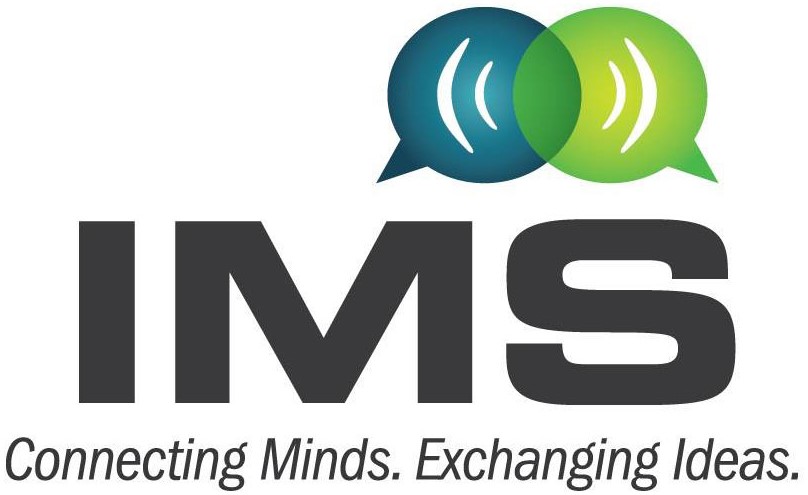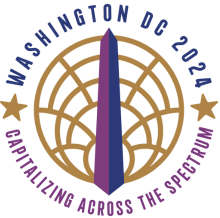Focus & Special Sessions
-
Space-based solar power has been in discussion for the last 40 years at least, but recently, with technological advances and the increase in gas cost, this topic is on the table again, not only in academic environments but especially in governmental programs. Some of the countries investing significantly in this approach include USA, Japan, China, Canada, the UK, New Zealand, Australia, and more recently the EU. The concept implies collecting energy out in space and beaming it to where needed, on earth or any other planet or satellite; one of the most recent ideas has been to use it to power up moon stations by creating a microwave energy link network on the moon. This special session's objective is to bring researchers in this area to IMS and to discuss the novelties in microwave transmitters and receivers, those being highly efficient power amplifiers or highly efficient RF to DC converters.
Future 6G wireless systems and beyond will support communications, sensing, and positioning at multiple spectrum bands. Novel networking architectures will be required to achieve performance, resiliency, and flexibility for deployment of the antenna and related RF hardware on fixed locations and vehicles for the radio access network. Deployment of a massive number of low SWaP-C picocells for coverage and flexible locations is a complex challenge that will strain the conventional base station, microcell, and even the O-RAN architectures, especially when applied to mm-wave and sub-THz spectrum bands at >100GHz. Does analog photonics have a role in meeting these challenges? If so, what is that role and what are the key bottlenecks to implementation? This focus session tackles this question and will feature diverse technical perspectives (all-electronic, digital photonic, analog photonic and hybrid) from academia, industry and government labs.
-
Dr Reynold Kagiwada (M '72, SM '79, F'89, LF'05), IEEE MTT-S Past President, passed away peacefully in June 2023. He is survived by his two children, Conan Kagiwada and Julia Kagiwada. Dr Kagiwada was an IEEE Life Fellow (1989), the recipient of the IEEE Third Millennium Medal, the MTT-S 2011 Distinguished Service Award and the MTT-S 1997 N. Walter Cox Award. He was recipient of TRW Gold Medal Award and the Ramo Technical Award in 1985. He was a member of Old Crows, Sigma Pi Sigma and Sigma Xi. Dr Kagiwada's career spans over 50 years. At Northrop Grumman (Redondo Beach, CA), he was Advanced Technology Director from 2002 to 2018. At TRW (Redondo Beach, CA), he was Advanced Technology Manager (1990–2002), Assistant Program Manager (1989–1990), MIMIC Program Chief Scientist (1988–1989), Project Manager (1987–1988), Laboratory Manager (1984–1987), Senior Scientist, Department Manager, (1977–1983) and Scientist, Section Head and MTS (1972–1977). In academia, he was Assistant Professor in Physics, University of Southern California (1969–1972) and Assistant Professor in Residence Physics, University of California Los Angeles (1966–1969). He is fondly remembered by generations of colleagues as a great mentor and advocate that brought out the best in everyone around him.
This session will discuss the integration of advanced wireless technologies in autonomous sensors in diverse fields such as environmental monitoring and smart infrastructure. It explores various wireless communication hardware and methods, assessing their compatibility with autonomous sensors based on range, power efficiency, and scalability.
-
Next-generation RF/mm-wave systems are of great interest in supporting high data-rate communications, which include future 5G FR3 and mm-wave 5G FR2 and 6G mobile networks. These RF networks can potentially deliver 10Gbps or higher and backhaul communications with >50Gbps. Since E/D/G-band can also support multi-GHz bandwidths, there is also growing interest in mm-wave phased array implementations. This focused session will cover emerging high-performance Silicon and III-V RF/mm-wave technologies toward 5G/6G wireless applications and DoD applications with speakers from both commercial (Global Foundries and Intel) and Defense (DARPA, Northrop Grumman, HRL) sectors.
-
Dr. Atia was a long-time contributor to the MTT-S in various capacities. Since 1969 he has been involved in research and development of a broad range of advanced microwave technologies for communication satellite transponders and antennas. Dr. Atia had seminal and fundamental contributions in the field of microwave filter synthesis and he was the recipient of the Pioneer Award of the IEEE Microwave Theory and Techniques Society (IEEE MTT-S) in 1997.
Dr. Zaki was a long-time contributor to the MTT-S in various capacities as well. She was the first female to graduate with a PhD in Electrical Engineering from the University of California, Berkeley, and the first female professor to join the department of Electrical and Computer Engineering at the University of Maryland, College Park. There she led an academic life of more than four decades. There she supervised many PhD students and contributed enormously to the field of electromagnetic modeling of passive components namely microwave filters and multiplexers. Her original research on dielectric resonators and filters was fundamental in advancing the state-of-the-art in dielectric resonator filters.
-
This memorial session will pay tribute to Professor John W. Bandler by recognizing his seminal contributions and visionary perspective on CAD techniques for RF and microwave modeling and automated design optimization. Invited outstanding collaborators will provide an overview of Prof. Bandler's main technical achievements and contributions, combined with personal anecdotes and photos highlighting memorable events and interactions. Joint technical developments to be reviewed include analysis methods for the response sensitivities of microwave circuits, including efficient EM-based S-parameters sensitivity calculations for accurate design and image-reconstruction; the portâtuning version of space mapping for efficient EM-based analysis and design; cognition-driven design for microwave filter optimization; advanced industrial microwave design problems in satellite systems; space mapping techniques for efficient post-manufacture tuning of microwave hardware; smart combination of artificial neural networks and space mapping for EM-based design optimization, statistical analysis, and yield optimization of microwave circuits; as well as interesting analogies between space mapping and artificial-intelligence (AI) approaches. Potential future directions will also be ventured regarding the relationship between cognitive science and engineering design, involving promising deeper integration of artificial-intelligence, machine learning, and space mapping.
-
This session covers wave-material interactions ranging from microwave microscopy to high-power-density plasma generation. Near-field microscopy for high-resolution material characterization at room and cryogenic temperatures is shown using frequencies from 2 to 12GHz. Additionally, resonator-based field enhancement is shown for low-power plasma generation in the 2.45GHz ISM band.


